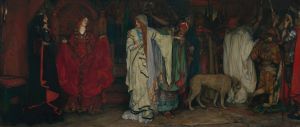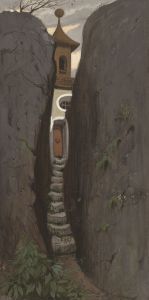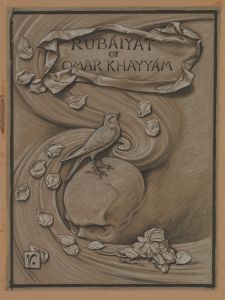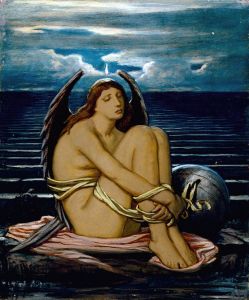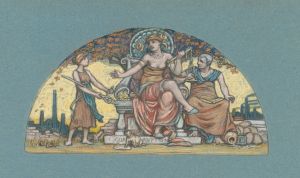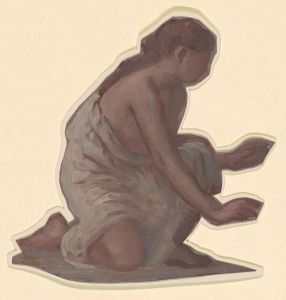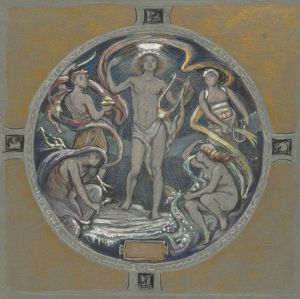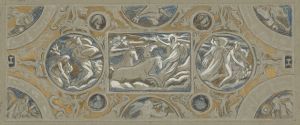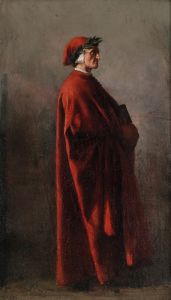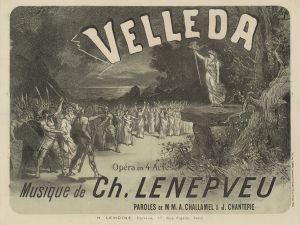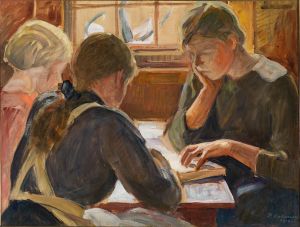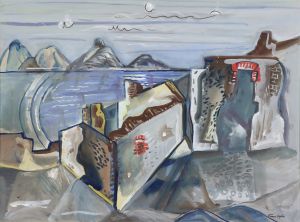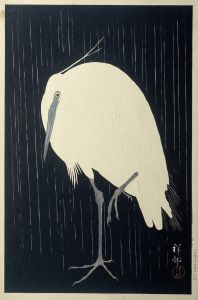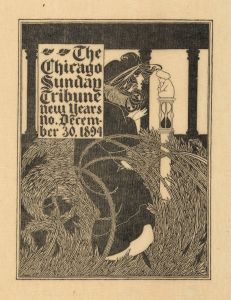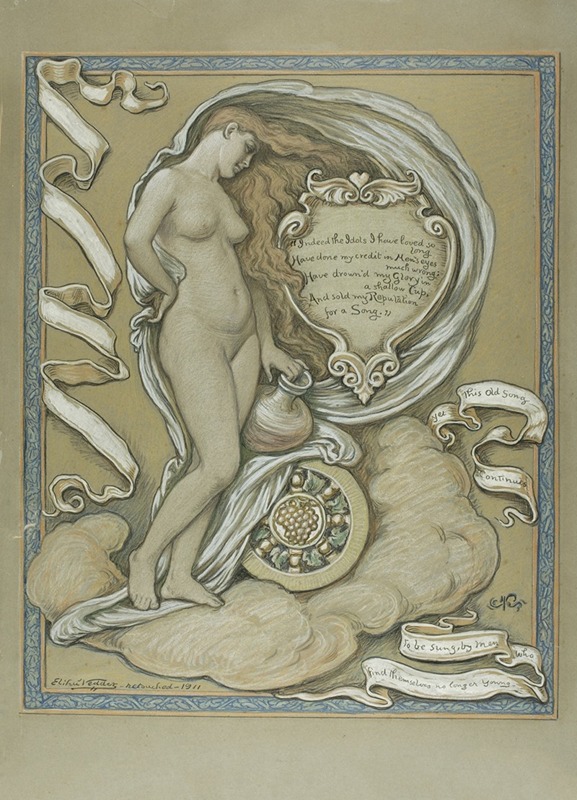
Figure Study for Rubaiyat of Omar Khayyam
A hand-painted replica of Elihu Vedder’s masterpiece Figure Study for Rubaiyat of Omar Khayyam, meticulously crafted by professional artists to capture the true essence of the original. Each piece is created with museum-quality canvas and rare mineral pigments, carefully painted by experienced artists with delicate brushstrokes and rich, layered colors to perfectly recreate the texture of the original artwork. Unlike machine-printed reproductions, this hand-painted version brings the painting to life, infused with the artist’s emotions and skill in every stroke. Whether for personal collection or home decoration, it instantly elevates the artistic atmosphere of any space.
Elihu Vedder's "Figure Study for Rubaiyat of Omar Khayyam" is a preparatory work associated with his illustrations for the 1884 edition of the "Rubaiyat of Omar Khayyam," a collection of quatrains attributed to the Persian poet Omar Khayyam. Vedder, an American symbolist painter, was renowned for his mystical and allegorical style, which made him an ideal choice for illustrating the Rubaiyat, a text rich in philosophical and existential themes.
The "Rubaiyat of Omar Khayyam" gained popularity in the English-speaking world through Edward FitzGerald's translation, first published in 1859. FitzGerald's version captured the imagination of the Victorian public with its themes of life's transience and the pursuit of pleasure. Vedder's illustrations for the 1884 edition were commissioned by the Boston-based publisher Houghton Mifflin and Company. This edition became one of the most celebrated illustrated books of the 19th century, combining FitzGerald's translation with Vedder's evocative imagery.
Vedder's "Figure Study for Rubaiyat of Omar Khayyam" is a testament to his meticulous preparation process. The study likely served as a preliminary exploration of form, composition, and symbolism, which Vedder would later incorporate into the final illustrations. His approach to the Rubaiyat was deeply influenced by his interest in mysticism and the esoteric, as well as his exposure to various artistic movements during his time in Europe, particularly in Italy, where he spent a significant portion of his career.
The figure study reflects Vedder's skill in rendering the human form with a sense of fluidity and grace. His use of line and shading suggests a deep understanding of anatomy and movement, while also imbuing the figure with an ethereal quality that aligns with the mystical nature of the Rubaiyat. Vedder's illustrations often feature symbolic elements, and while the specific symbols in the figure study are not detailed, his work on the Rubaiyat as a whole is known for its incorporation of motifs such as the wheel of fortune, the hourglass, and the veil, all of which underscore the themes of fate, time, and the unknown.
The 1884 edition of the Rubaiyat, with Vedder's illustrations, was a commercial and critical success, solidifying his reputation as a leading figure in the American symbolist movement. The book's success also contributed to the enduring popularity of the Rubaiyat in Western culture, influencing subsequent generations of artists and writers.
Vedder's work on the Rubaiyat is considered a pinnacle of his artistic career, showcasing his ability to translate complex philosophical ideas into visual form. His illustrations continue to be celebrated for their beauty and depth, offering viewers a window into the rich interplay between text and image. The "Figure Study for Rubaiyat of Omar Khayyam" remains an important piece within Vedder's oeuvre, reflecting his dedication to capturing the essence of Khayyam's poetry through art.





